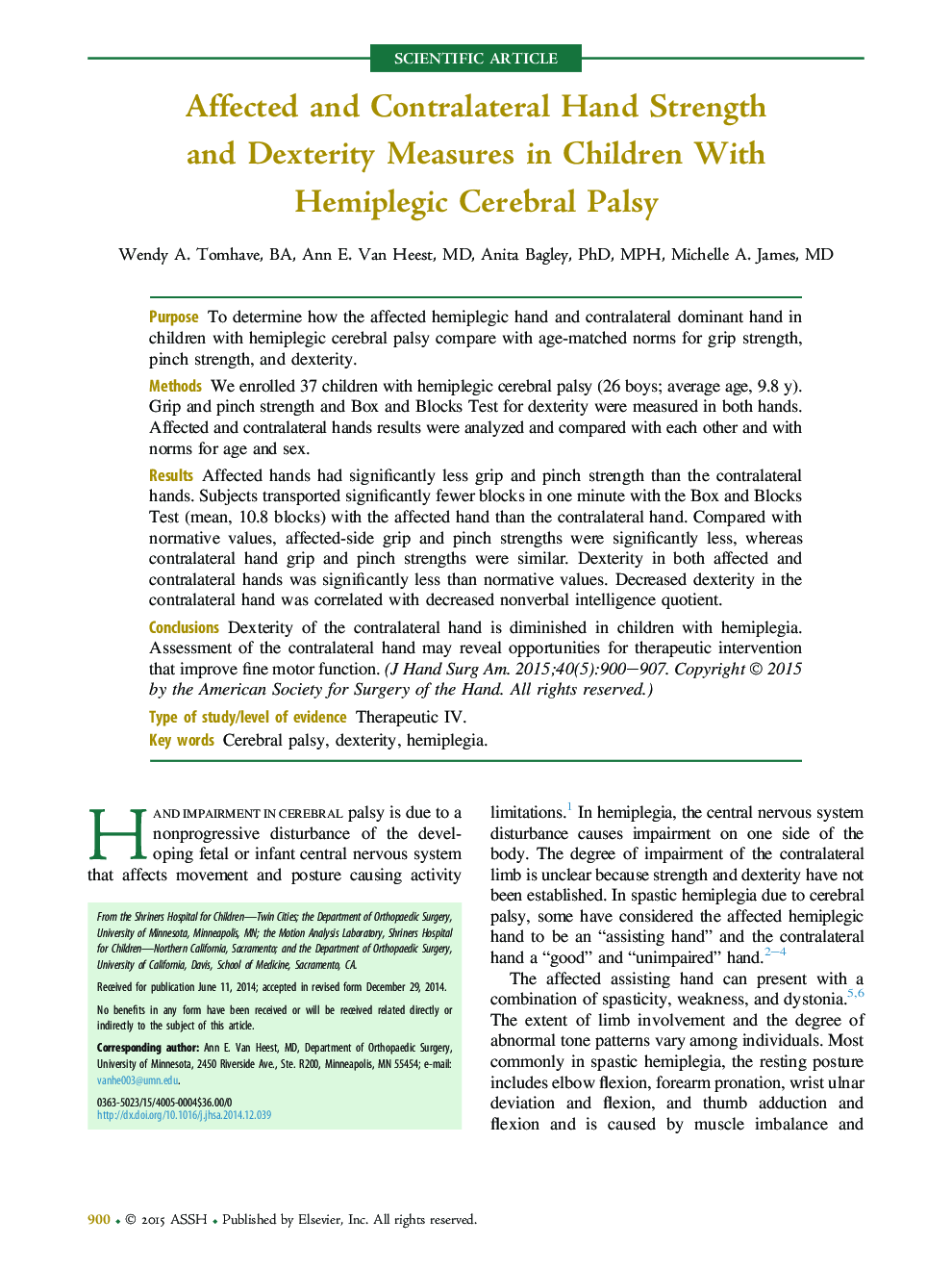| Article ID | Journal | Published Year | Pages | File Type |
|---|---|---|---|---|
| 4066801 | The Journal of Hand Surgery | 2015 | 8 Pages |
PurposeTo determine how the affected hemiplegic hand and contralateral dominant hand in children with hemiplegic cerebral palsy compare with age-matched norms for grip strength, pinch strength, and dexterity.MethodsWe enrolled 37 children with hemiplegic cerebral palsy (26 boys; average age, 9.8 y). Grip and pinch strength and Box and Blocks Test for dexterity were measured in both hands. Affected and contralateral hands results were analyzed and compared with each other and with norms for age and sex.ResultsAffected hands had significantly less grip and pinch strength than the contralateral hands. Subjects transported significantly fewer blocks in one minute with the Box and Blocks Test (mean, 10.8 blocks) with the affected hand than the contralateral hand. Compared with normative values, affected-side grip and pinch strengths were significantly less, whereas contralateral hand grip and pinch strengths were similar. Dexterity in both affected and contralateral hands was significantly less than normative values. Decreased dexterity in the contralateral hand was correlated with decreased nonverbal intelligence quotient.ConclusionsDexterity of the contralateral hand is diminished in children with hemiplegia. Assessment of the contralateral hand may reveal opportunities for therapeutic intervention that improve fine motor function.Type of study/level of evidenceTherapeutic IV.
